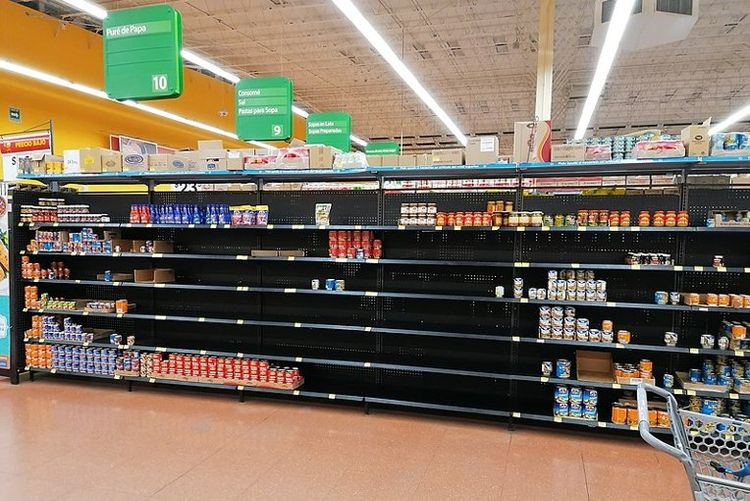Thinking about a world of scarcity

Talking about shortages has now become a trend. In recent years, there has been a fluctuation in the availability of computer chips, going from scarcity to abundance. After the conflict in Ukraine and deliberate disruptions in gas pipelines from Russia, Europe faced a severe shortage of natural gas. However, through commendable conservation efforts and the importation of liquefied natural gas (LNG), the price dramatically decreased. Unfortunately, last week the mere possibility of labor strikes among LNG workers in Australia, a significant exporter, caused the price in Europe to surge once again.
In the past decade, the world appeared to have an abundance of everything, making the current shortages startling for individuals whose recollections only span beyond 2010.
However, looking back not too long ago, we can find instances of this. It was during the mid-2000s when we saw a significant increase in food prices. Presently, we are witnessing a similar upward trend. During that period, there was also a record-breaking surge in oil prices, which we are currently experiencing once again. Likewise, the value of metals experienced a noteworthy increase during that time frame, and we are now observing a repeated occurrence of this.
There is a commonly held belief that shortages and expensive prices can actually solve shortages and expensive prices. And to some extent, this is true because higher prices encourage more individuals to produce greater quantities of the goods that are in high demand. However, when prices are increasing across the board, it becomes challenging for miners, growers, and manufacturers to simultaneously address the rising prices in all areas. They only have limited funds available for investment. This is why periods of rising prices can persist for a while before they are effectively resolved.
But what if certain crucial resources don't adhere to the principles of modern economics? What if those principles only function in a world where there is increasing extraction of inexpensive resources? What if the cost of extracting progressively lower quality metals, gathering larger quantities of crops and fibers from depleted farmland already saturated with the maximum amount of fertilizers plants can absorb, extracting more water from declining water tables and shrinking streams and reservoirs – what if we simply cannot financially sustain all of this on a large scale? The consequence would be that extraction in some areas would be unable to keep up with the demands of the population, resulting in a decline in living standards.
I am revisiting helium as a sign of what is happening. In 2009, I suggested that the world was moving towards a severe helium shortage. At that time, the U.S. government and its Federal Helium Program controlled the majority of the global helium market, gathering the most abundant helium sources in the world. In the 1920s, the government determined that helium was a crucial resource and took charge of managing it for national security reasons. (To understand why finding substitutes for helium is challenging, please refer to my 2009 article.) However, in 1996, the U.S. Congress made the decision to withdraw from the helium business and allow the market to determine prices and discover new sources.
The nearing conclusion of the helium market departure is in progress. The authorities have ceased the sale of helium. Consequently, private enterprises are now engaged in a race to discover and generate the much-required helium worldwide. At present, numerous companies are actively involved in this pursuit.
The cost of helium is skyrocketing and attaining it has become more difficult in the interim. This dilemma is so severe that researchers in need of helium for various studies are facing significant challenges in obtaining it. Consequently, there are demands for the U.S. government to maintain involvement in the helium industry to ensure a consistent supply for research institutions, including its own.
A different instance of a developing trend can be seen in the rice industry. In numerous nations, the government takes charge of maintaining the availability of essential food items to prevent scarcity. Presently, rice prices in Asia are at a peak or very close to it. India, being the largest rice exporter globally, has already imposed certain limitations on rice exports. The concern is that other countries might imitate this approach. The rationale behind this is quite straightforward: nothing leads to the ousting of the ruling party from power faster than a shortage of food. By keeping a larger quantity of food within their own borders, countries can keep prices stable and low.
One of the factors contributing to the challenges in rice production is a powerful El Nino that is having adverse impacts on weather conditions for farmers in Asia. Moreover, this potent El Nino occurrence is commencing at a time when global ocean temperatures are already elevated. Consequently, the influence of this El Nino event in the era of climate change will be significantly intensified compared to past years.
Helium and rice exemplify scarcities that cannot solely be resolved by relying on "the market" (I use quotes since genuine free markets are rare, with most being controlled by major entities). A collaboration of government and private measures is being organized to fulfill objectives that consider social concerns, similar to the situation with rice, or as is being demanded regarding helium.
Putting all our attention on making money alone will result in excessive and intense strain on valuable resources, and this is precisely what has brought us to our current situation. Simply continuing in this manner will not bring about the necessary solutions to address the long-standing issues concerning the scarcity of vital resources.
Image: Empty shelves in a Mexican grocery store due to excessive buying triggered by the outbreak of Covid-19 in Mexico (2020). Photo taken by Haldu and shared on Wikimedia Commons. Link to the image: https://commons.wikimedia.org/wiki/File:Rupture_de_stock_provoqu%C3%A9e_par_les_achats_de_panique_avec_l%27arriv%C3%A9e_du_Covid-19_au_Mexique.jpg









































